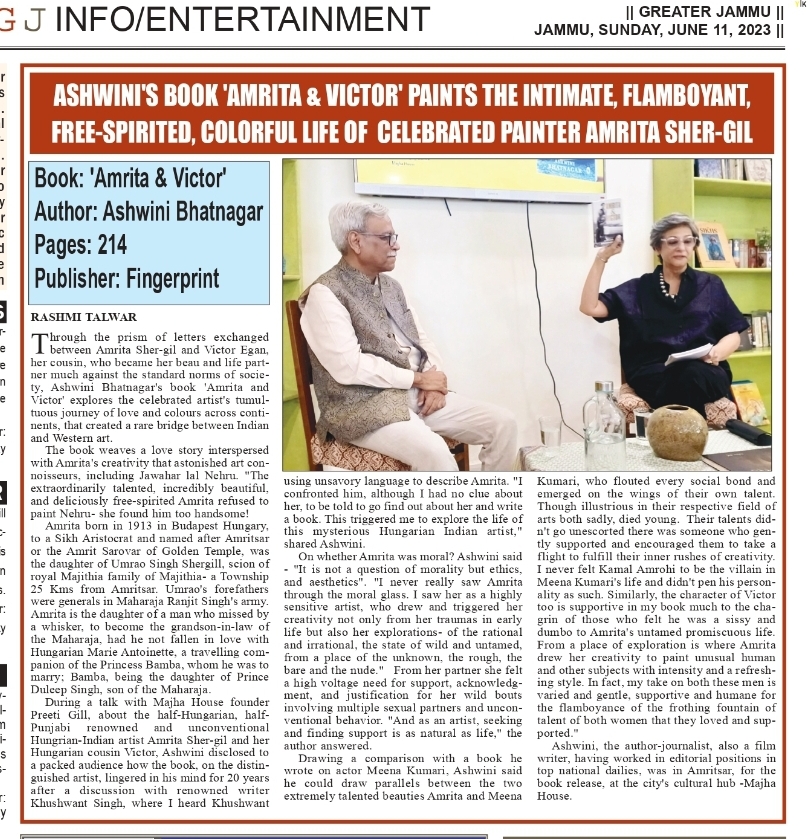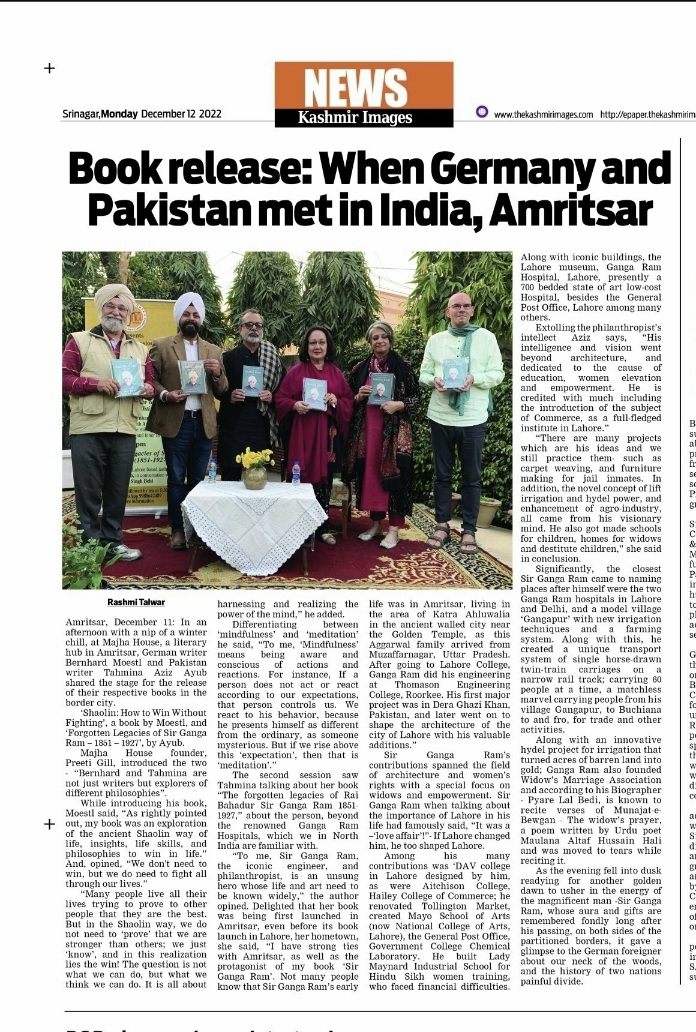Ashwini’s book ‘Amrita & Victor’ paints the intimate, flamboyant, free-spirited, colorful life of celebrated painter Amrita Sher-gil
Rashmi Talwar

Book: ‘Amrita & Victor’ by Ashwini Bhatnagar
Pages: 214
Publisher: Fingerprint
Ashwini’s book ‘Amrita & Victor’ paints the intimate, flamboyant, free-spirited, colorful life of celebrated painter Amrita Sher-gil
Rashmi Talwar
AMRITSAR 9th June 2023—Through the prism of letters exchanged between Amrita Sher-gil and Victor Egan, her cousin, who became her beau and life partner much against the standard norms of society, Ashwini Bhatnagar’s book ‘Amrita and Victor’ explores the celebrated artist’s tumultuous journey of love and colours across continents, that created a rare bridge between Indian and Western art.
The book weaves a love story interspersed with Amrita’s creativity that astonished art connoisseurs, including Jawahar Lal Nehru. “The extraordinarily talented, incredibly beautiful, and deliciously free-spirited Amrita refused to paint Nehru- she found him too handsome!
Amrita born in 1913 in Budapest Hungary, to a Sikh Aristocrat and named after Amritsar or the Amrit Sarovar of Golden Temple, was the daughter of Umrao Singh Shergill, scion of royal Majithia family of Majithia- a Township 25 Kms from Amritsar. Umrao’s forefathers were generals in Maharaja Ranjit Singh’s army. Amrita is the daughter of a man who missed by a whisker, to become the grandson-in-law of the Maharaja, had he not fallen in love with Hungarian Marie Antoinette, a travelling companion of the Princess Bamba, whom he was to marry; Bamba, being the daughter of Prince Duleep Singh, son of the Maharaja.
During a talk with Majha House founder Preeti Gill, about the half-Hungarian, half-Punjabi renowned and unconventional Hungrian-Indian artist Amrita Sher-gil and her Hungarian cousin Victor, Ashwini disclosed to a packed audience how the book, on the distinguished artist, lingered in his mind for 20 years after a discussion with renowned writer Khushwant Singh, where I heard Khushwant using unsavory language to describe Amrita. “I confronted him, although I had no clue about her, to be told to go find out about her and write a book. This triggered me to explore the life of this mysterious Hungarian Indian artist,” shared Ashwini.
On whether Amrita was moral? Ashwini said – “It is not a question of morality but ethics, and aesthetics”. “I never really saw Amrita through the moral glass. I saw her as a highly sensitive artist, who drew and triggered her creativity not only from her traumas in early life but also her explorations- of the rational and irrational, the state of wild and untamed, from a place of the unknown, the rough, the bare and the nude.” From her partner she felt a high voltage need for support, acknowledgment, and justification for her wild bouts involving multiple sexual partners and unconventional behavior. “And as an artist, seeking and finding support is as natural as life,” the author answered.
Drawing a comparison with a book he wrote on actor Meena Kumari, Ashwini said he could draw parallels between the two extremely talented beauties Amrita and Meena Kumari, who flouted every social bond and emerged on the wings of their own talent. Though illustrious in their respective field of arts both sadly, died young. Their talents didn’t go unescorted there was someone who gently supported and encouraged them to take a flight to fulfill their inner rushes of creativity. I never felt Kamal Amrohi to be the villain in Meena Kumari’s life and didn’t pen his personality as such. Similarly, the character of Victor too is supportive in my book much to the chagrin of those who felt he was a sissy and dumbo to Amrita’s untamed promiscuous life. From a place of exploration is where Amrita drew her creativity to paint unusual human and other subjects with intensity and a refreshing style. In fact, my take on both these men is varied and gentle, supportive and humane for the flamboyance of the frothing fountain of talent of both women, that they loved and supported.”
Ashwini, the author-journalist, also a film writer, having worked in editorial positions in top national dailies, was in Amritsar, for the book release, at the city’s cultural hub -Majha House.
00–00












Recent Comments